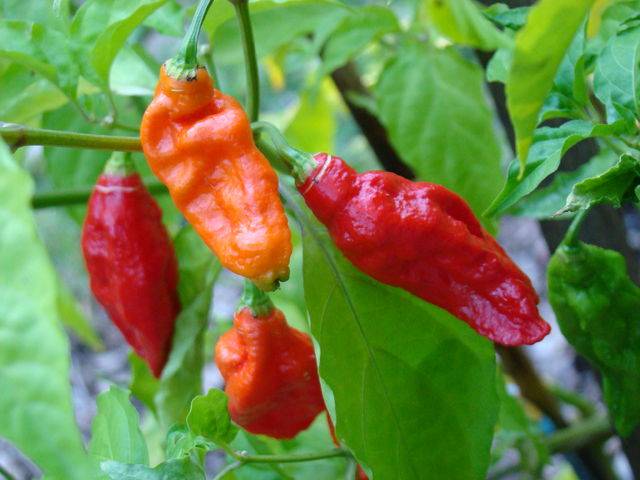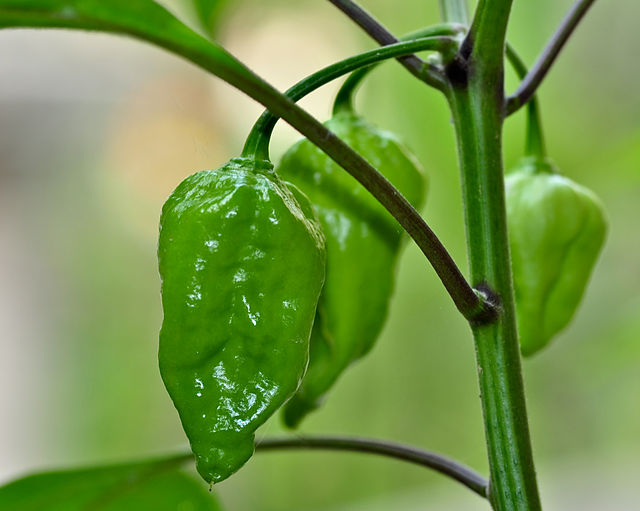Scoville scale
scale for measuring heat of peppers From Wikipedia, the free encyclopedia
Remove ads
The Scoville scale is a measurement of pungency (spiciness or "heat") of chili peppers and other substances. It is recorded in Scoville heat units (SHU). It is based on the amount of capsaicinoids (chemical compounds that are heat components) in the substance. Capsaicin is the main capsaicinoid that is measured.[3]



The scale is named after its creator, American pharmacist Wilbur Scoville.[3][4] The Scoville organoleptic test is a subjective assessment derived from the capsaicinoid sensitivity by people experienced with eating hot chilis.[3]
An alternative method, high-performance liquid chromatography, can be used to quantify the capsaicinoid content as an sign of how pungent something is.[3][5]
Remove ads
Scoville organoleptic test
In the Scoville organoleptic test, an exact weight of dried pepper is dissolved in alcohol. This extracts the capsaicinoids. They are then diluted in a solution of sugar water.[3][6] Decreasing concentrations of the extracted capsaicinoids are given to a panel of five trained tasters, until a majority (at least three) can no longer detect the heat in a dilution.[1][3][6] The heat level is based on this dilution, rated in multiples of 100 SHU.[6]
Capsicum chili peppers are used to add pungency in food.[3] The range of pepper heat reflected by a Scoville score is from 500 or less (sweet peppers) to over 2.6 million (Pepper X).
Remove ads
References
Wikiwand - on
Seamless Wikipedia browsing. On steroids.
Remove ads
